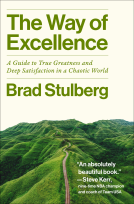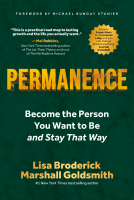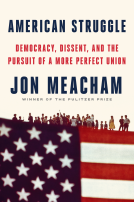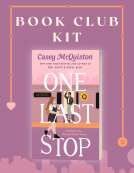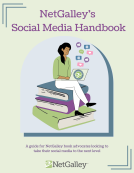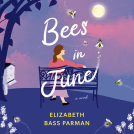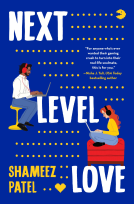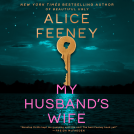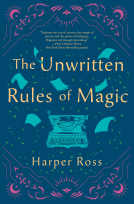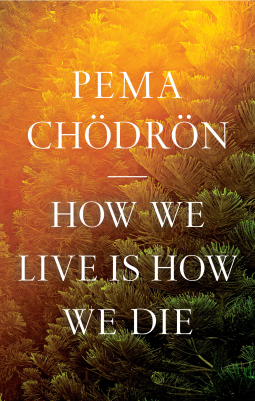
How We Live Is How We Die
by Pema Chodron
This title was previously available on NetGalley and is now archived.
Send NetGalley books directly to your Kindle or Kindle app
1
To read on a Kindle or Kindle app, please add kindle@netgalley.com as an approved email address to receive files in your Amazon account. Click here for step-by-step instructions.
2
Also find your Kindle email address within your Amazon account, and enter it here.
Pub Date Oct 04 2022 | Archive Date Oct 04 2022
Shambhala Publications, Inc. | Shambhala
Talking about this book? Use #HowWeLiveIsHowWeDie #NetGalley. More hashtag tips!
Description
As much as we might try to resist, endings happen in every moment—the end of a breath, the end of a day, the end of a relationship, and ultimately the end of life. And accompanying each ending is a beginning, though it may be unclear what the beginning holds. In How We Live Is How We Die, Pema Chödrön shares her wisdom for working with this flow of life—learning to live with ease, joy, and compassion through uncertainty, embracing new beginnings, and ultimately preparing for death with curiosity and openness rather than fear.
Poignant for readers of all ages, her teachings on the bardos—a Tibetan term referring to a state of transition, including what happens between this life and the next—reveal their power and relevance at each moment of our lives. She also offers practical methods for transforming life’s most challenging emotions about change and uncertainty into a path of awakening and love. As she teaches, the more freedom we can find in our hearts and minds as we live this life, the more fearlessly we’ll be able to confront death and what lies beyond. In all, Pema provides readers with a master course in living life fully and compassionately in the shadow of death and change.
Available Editions
| EDITION | Other Format |
| ISBN | 9781611809244 |
| PRICE | $24.95 (USD) |
| PAGES | 224 |
Average rating from 19 members
Featured Reviews
 Educator 364311
Educator 364311
Wonderful book by Pema Chödrön. Confession, I will read anything she writes, and she penned this book in her 85th year! She shares teachings on life and death and how to work with difficult but human emotions, and the fear inherent in change. Her books are always written in a simple, easy to read, style, as well as being compassionate and wise. Highly recommended for anyone who missed but would appreciate the instruction book on how to "do" and live life. Thanks to Netgalley for the ARC.
 Janet I, Reviewer
Janet I, Reviewer
This book describes bardo,a term used in Tibetan Buddhism for the intermediate stage between death and life. These teachings are based on an ancient text. The Tibetan Book of the Dead, which describes the various experiences the dead person will go through and serves as a guide to help them through what is thought to be a disorienting journey from this life to the next. This book also addresses, in a profound and moving manner, the question of why we are afraid of death and what we can do to prepare for a peaceful transition. Index. Appendices. List of suggested readings.
Though I don’t share Peña Chodron’s Buddhist path and practice, I constantly learn from her teachings as I seek and often find intersections with my own Mussar study and practice. She is wise, compassionate, and entertaining in a wisdom kind of way. Another string offering from a wonderful teacher.
 Bookseller 219665
Bookseller 219665
I have to say I may be biased but I love Pema Chodron! I have followed this author for years and being in her 80's and still helping us with her teachings is amazing . In this book she takes on the subject of death and transitioning. Everyone has their own beliefs about what comes next if anything after death. With everything that is going on in the world today, this book could not have come at a better time. I am looking forward to getting a hard copy for my library when it is released.
Thank you to NetGalley and Shambhala Publishing for allowing me this ARC.
 Paul V, Reviewer
Paul V, Reviewer
As usual, Pema provides lots of wisdom, of which, she is a highly dependable source. I read a several of her books and always find them helpful and comforting. Recommended.
Thanks very much for the free ARC for review!!
Pema Chödrön’s “How We Live is How We Die” is a must read for any person desiring to learn from a spiritual master. You will live more bravely, wisely, and compassionately after reading this book!
 beth e, Librarian
beth e, Librarian
Pema Chodron is a Buddhist nun who has great insight to offer. In How We Live Is How We Die she teaches the reader how to live with change - the constant shift between life and death, beginnings and endings.
Full of insightful thoughts - helping readers understand how to accept change with curiosity rather than fear - she leads up to training us to die as we live.
Very uplifting and easy reading for such hefty thoughts.
 Margot S, Reviewer
Margot S, Reviewer
This book sets out to do exactly what the title states - to show how we live is how we die -- and by realizing that, we can meet death with less fear and more presence. We can live that way, too. Chodron draws from the teachings of Tibetan Book of the Dead to illustrate the transience of life (how we experience multiple deaths daily) and what happens after our physical body dies (what happens when you wake up in the bardo). Although I am not a practicing Buddhist, as a mental health counsellor, I I still found much to learn from Chodron's book. She describes how emotions are the path to awakening and gives some concrete practices to help work with our emotions. I appreciated her breakdown of the various 'kleshas' (states of mind like anger, craving, jealousy) that trap us and the wisdom that they can also hold. She also provides some meditations at the end. There were sections in the book that took deeper dives into Buddhist philosophy that were beyond my comprehension and interest. All to say that I feel both non-Buddhists and practicing Buddhists alike can find wisdom in this book. Thank you to Netgalley and Shambala Publications for the ARC.
 Karen M, Reviewer
Karen M, Reviewer
HOW WE LIVE IS HOW WE DIE
BY: PEMA CHODRON
I had heard that Pema Chodron was a compassionate guide and after reading this I wholeheartedly agree. I found much value in this book. I confess to reading it twice and I read it about half-way through it for a third time. Each time I resonated with it a little more. Although, she is a practicing Buddhist from which I knew some things--I did come away from reading this with much gained knowledge in how to actually practice a lot that I sort of knew.
We all have our propensities towards certain behaviors and what she called Kleshas. I found this particular information to be so true. I also came away with a fresh perspective on how to look at mine and this is a book that I plan on re-reading from where I left off during my third perusal through it. There is a reading list at the back of the book from which I noticed that some are ones that she referred to in the main text.
I definitely gained a lot of insight and am grateful to have had the opportunity to have chosen this to read. It is a book that can be read in just a few hours. I thought that I may finally read, "Lincoln in the Bardo," which was published in 2018. It is one of the suggested titles named for further reading. Again, I am indebted to Pema Chodron for explaining basic concepts from which I already knew, but her ability for me to internalize them on a deeper level is what I found to be transforming.
Publication Date 10-04-22
Thank you to Net Galley, Pema Chodron and Shambhala Publications, Inc. for providing me with my ARC in exchange for a fair and honest review. All opinions are my own.
#HowWeLiveIsHowWeDie #PemaChodron #ShambhalaPublicationsInc #NetGalley
The different Buddhist terms made more sense with each subsequent reading
The reader definitely needs to keep an open mind coming into this book. It is full of little bits of awesome you just have to be in the right mindset to see them for yourself.
Well, this book certainly impacted me and made me rather contemplative. It is the first time I have read something by Pema Chodron but I will surely look for some of her other titles.
The title of this book indicates that it will be a deep read and indeed it is. It is based upon the Tibetan Bardo texts. The author guides readers in exploring and accepting the flow of changes that constantly occur in life. It is about a cycle of beginnings, endings, beginnings…really all of life.
I highly recommend this book. It has helped me to worry a bit less and live a bit more.
Many thanks to NetGalley and Shambala Publications, Inc. for this title. All opinions are my own.
Pema Chodron’s newest title, “How We Live is How We Die” (Shambala, 2022), includes her generous wit and compassion, while exploring topics that a preponderance of the population would like to explore the least.
An ordained nun in the Tibetan Buddhist tradition, Chodron discusses the stages of “the bardos,” particularly as exhibited in “The Tibetan Book of the Dead.” In the first of six stages, “the natural bardo of this life,” we partake in the work of understanding that continual change exists. We are in a continual flow state that our practice and understanding of the bardos, as well as impermanence, non-attachment, and suffering, can help us grasp this reality of constant change. Fighting against change, fear, and how uncomfortable we feel often increases our suffering manifold. As Thich Nhat Hanh noted (and Chodron quotes as well): “It’s not impermanence that makes us suffer. What makes us suffer is wanting things to be permanent when they are not.”
“How We Live is How We Die” also touches on parts of Chodron’s personal history, consciousness, relative and absolute truth, the three kleshas, tonglen practice and meditation, and more.
Readers and practitioners of Tara Brach, Roshi Joan Halifax, Frank Ostaseki, Sharon Salzberg, Lama Rod Owens, Rev. angel Kyodo williams, and Ruth King may find this hits their practice and reading sweet spot!
 Bookseller 689249
Bookseller 689249
Two days after I was first given access to this book, a close family member of mine passed away. I couldn’t look at the book for a while; thinkings about life and death was too hard for me to confront.
I came back to Pema Chodron’s book a while later and am so glad I did. We are always in a transitional state, the Bardo, she says, and every moment in our life is unique. Life is just a transitional stage to death, and death transitions us back to the next life: “You breathe out and keep going. No more in-breath.”
I am thankful for the time I had before reading this book. It resonated that much more to me because of it. And although I feel guilty for a late review, I’m sure Chodron will understand: “Luckily for us, even in the bardo, it’s never too late to try again.”
Readers who liked this book also liked:
Lisa Broderick and Marshall Goldsmith
Business, Leadership, Finance, Nonfiction (Adult), Self-Help
